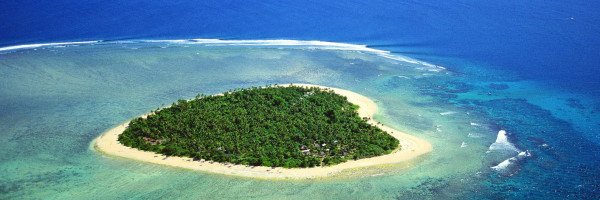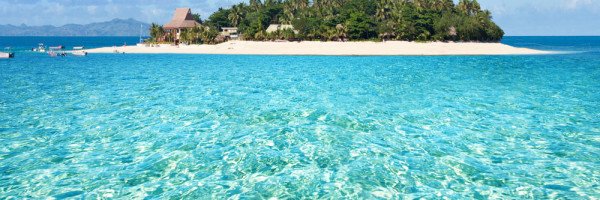The Geological Background of Fiji’s Caves
Fiji’s caves are remarkable natural formations shaped by a combination of geological processes over millions of years. The primary type of rock that forms these caves is limestone, which is prevalent throughout the islands. This sedimentary rock is composed mainly of calcium carbonate, originating from the remains of marine organisms. As the sea level fluctuated due to climatic changes, these limestone deposits were uplifted, creating the perfect conditions for cave formation. The process of karstification plays a significant role in the development of Fiji’s caves. Rainwater infiltrates the ground, where it becomes slightly acidic by absorbing carbon dioxide from the soil and atmosphere. This acidic water seeps into the limestone, gradually eroding it and creating underground chambers and passageways. Over time, the continued dissolution of limestone leads to the formation of extensive cave systems, adorned with stalactites and stalagmites. Fiji’s unique geological history contributes to the distinct features of its caves. Many of these caves are found within the lush tropical forests, creating a stunning contrast between the vibrant greenery and the rocky formations. For those looking to explore Fiji’s natural wonders, understanding the geology behind these caves enhances the experience. To learn more about the beautiful landscapes of the Fiji Islands and their geological significance, consider visiting some of the historic caves that showcase these natural marvels.The Role of Erosion in Cave Formation
Erosion is a crucial factor in the formation of caves in Fiji, especially in the context of limestone formations. The interplay between chemical and physical weathering leads to the development of intricate cave systems. Chemical erosion occurs when acidic rainwater interacts with limestone, dissolving the rock and creating voids. Meanwhile, physical erosion, caused by water flow, can carve out larger passages and chambers over time. In Fiji, the combination of tropical rainfall and the porous nature of limestone leads to rapid erosion. The heavy rains during the wet season contribute to the enlargement of existing cave systems, while also creating new ones. This dynamic process can be observed in many of Fiji’s historic caves, where visitors can witness firsthand the effects of erosion and the beauty it brings to the landscape. New Zealand, with its own limestone formations, provides a great comparison to Fiji’s cave systems. The Waitomo Caves, for example, are famous for their glowworms and unique limestone formations. The erosion processes in both locations reveal the power of nature in shaping the earth. For those interested in learning more about Fiji’s geological wonders, the Fiji Islands offer opportunities to explore these stunning caves and appreciate the forces that created them.Exploring Fiji’s Historic Caves
Fiji is home to a variety of historic caves, each with its own unique story and geological features. These caves not only showcase impressive natural formations but also serve as significant cultural and historical sites. Many of them have been used for shelter, rituals, and as places of refuge throughout Fijian history. One notable cave is the Sawa-i-Lau Caves, located in the Yasawa Islands. This cave system features stunning limestone formations and is famous for its crystal-clear waters. Visitors can take guided tours to explore both the above-ground and underwater sections of the caves, learning about their geological significance and historical importance. Another remarkable cave is the Naihehe Caves, known for their historical use by Fijian warriors. The caves are rich in folklore and are adorned with fascinating rock formations. Exploring these caves provides insights into Fiji’s past and the ways in which the landscape has influenced its culture. For those traveling to Fiji, the Fiji Islands offer ample opportunities to explore these historic caves. Engaging with local guides can enhance your understanding of the caves’ significance and the geology behind them.The Biodiversity Within Fiji’s Caves
Fiji’s caves are not just geological formations; they are also ecosystems teeming with life. The unique conditions within these caves create habitats for various species, including bats, insects, and even rare plants. The warm, humid environment of caves allows for a diverse range of organisms to thrive, making these ecosystems vital for biodiversity. Bats play a crucial role in the cave ecosystems of Fiji. As pollinators and seed dispersers, they contribute to the health of the surrounding forests. The presence of bats also indicates a thriving ecosystem, as they rely on the caves for roosting and breeding. Furthermore, the guano produced by bats enriches the soil, supporting plant life both within and outside the caves. The combination of geological formations and biodiversity makes Fiji’s caves an essential part of the islands’ natural heritage. Visitors interested in ecological studies or simply the beauty of nature will find that exploring these caves provides a unique glimpse into the interconnectedness of life. To learn more about the ecological significance of Fiji’s caves and the surrounding environment, check out the Fiji Islands, where nature and geology come together in stunning harmony.The Cultural Significance of Caves in Fiji
Caves in Fiji hold deep cultural significance, serving as important historical and spiritual sites for the local communities. Many caves have been used for shelter, refuge, or ceremonial purposes throughout Fijian history. They often feature rock art or artifacts that highlight the relationship between the Fijian people and their environment. For instance, the Naihehe Caves were historically used by warriors as a hideout, showcasing the strategic importance of caves in Fijian warfare. The caves are intertwined with local legends and stories, making them a vital part of the cultural landscape. By visiting these caves, travelers can connect with the rich history and traditions of the Fijian people. Understanding the cultural significance of these historic caves adds depth to the exploration experience. Engaging with local guides can provide valuable insights into the stories and traditions associated with these natural wonders. Travelers interested in cultural heritage will find that the Fiji Islands offer a wealth of opportunities to learn about the interplay between geology and culture in these majestic caves.Conservation Efforts for Fiji’s Caves
The preservation of Fiji’s caves is essential for maintaining their ecological and cultural importance. As tourism increases, so does the need for conservation efforts to protect these fragile ecosystems. Local organizations and government initiatives are working to ensure that the natural beauty and historical significance of the caves are preserved for future generations. One key aspect of conservation is educating visitors about the importance of respecting the natural environment. This includes following guidelines for cave tours, such as not touching formations, avoiding littering, and minimizing disturbance to the wildlife inhabiting the caves. Sustainable tourism practices can help to mitigate the impact on these delicate ecosystems. In addition to visitor education, efforts are being made to conduct scientific research on the geology and biology of the caves. Understanding the unique features of these caves is crucial for developing effective conservation strategies. By studying the cave systems, researchers can monitor changes and implement measures to protect these natural wonders. Travelers interested in supporting conservation efforts can seek out eco-friendly tours and participate in initiatives aimed at preserving Fiji’s natural heritage. To learn more about the stunning caves and the ongoing conservation efforts in the Fiji Islands, consider joining guided tours that emphasize sustainability and education.Comparative Analysis: Caves in Fiji and New Zealand
When comparing the caves of Fiji to those in New Zealand, distinct differences and similarities emerge. Both countries feature impressive limestone formations and unique cave ecosystems, but their geological histories and cultural contexts vary significantly. In New Zealand, caves like the Waitomo Caves are renowned for their glowworms and extensive cave systems. These caves have been shaped by similar processes of erosion and karstification as those in Fiji. However, the cultural significance of New Zealand’s caves often relates to Māori heritage and legends, showcasing a different cultural lens compared to Fiji’s history tied to warriors and refuge. Travelers from New Zealand visiting Fiji will find a different landscape and set of experiences in the caves. The lush tropical environment surrounding Fiji’s caves contrasts with New Zealand’s temperate forests, offering a diverse range of flora and fauna to explore. Both locations provide unique opportunities for adventure and discovery, making them worthwhile destinations for cave enthusiasts. For those looking to explore the geological wonders of either region, the Fiji Islands present a captivating experience filled with rich history and stunning natural beauty, inviting comparisons to the remarkable caves found in New Zealand.FAQs
What are the main geological features of Fiji’s caves?
Fiji’s caves are primarily formed from limestone, shaped by processes such as erosion and chemical weathering. These caves often feature stunning stalactites and stalagmites, along with unique formations like flowstones and draperies, which contribute to their mesmerizing beauty.
How did Fiji’s historic caves form?
The historic caves of Fiji were formed over millions of years through the dissolution of limestone by acidic rainwater, which creates underground voids. This process, coupled with tectonic activity, has led to the development of extensive cave systems that hold significant historical and cultural importance.
What is the significance of Fiji’s historic caves?
Fiji’s historic caves hold great cultural significance, serving as ancient shelters for early inhabitants and sites for rituals. Many caves are also associated with local legends and traditions, making them important for understanding Fiji’s rich history and cultural heritage.
Are there any unique ecosystems within Fiji’s caves?
Yes, the unique ecosystems within Fiji’s caves host various species of bats, insects, and other wildlife, adapted to the dark and humid conditions. These ecosystems play a crucial role in maintaining biodiversity and offer insights into the region’s ecological balance.
What are some popular caves to visit in Fiji?
Some popular caves to explore in Fiji include the Sawa-i-Lau Caves, known for their stunning blue lagoons, and the Naihehe Caves, which are famous for their historical significance and intricate rock formations. Both offer guided tours that highlight their geological and cultural features.
How do the caves contribute to Fiji’s tourism?
The caves of Fiji are significant tourist attractions, drawing visitors interested in adventure, geology, and culture. They provide opportunities for activities such as cave exploration, snorkeling, and guided historical tours, contributing to the local economy and promoting environmental awareness.
What preservation efforts are in place for Fiji’s historic caves?
Preservation efforts for Fiji’s historic caves include regulations to protect these natural wonders from vandalism and over-tourism. Local communities and conservation organizations are working together to promote sustainable tourism practices and educate visitors about the importance of preserving these geological and cultural treasures.
References
- Fiji Islands Official Tourism Site – A comprehensive resource on Fiji’s natural attractions, including its caves and geological features.
- Geology.com – An informative site that provides articles and resources on various geological formations, including cave systems and their origins.
- ScienceDirect – A leading platform for scientific research where you can find studies related to cave geology and environmental impacts in Fiji.
- ResearchGate – A social networking site for scientists where you can access research papers on the geology of caves and their unique features.
- National Geographic – This site offers articles and stunning imagery related to caves around the world, including insights into their geological significance and formation processes.







